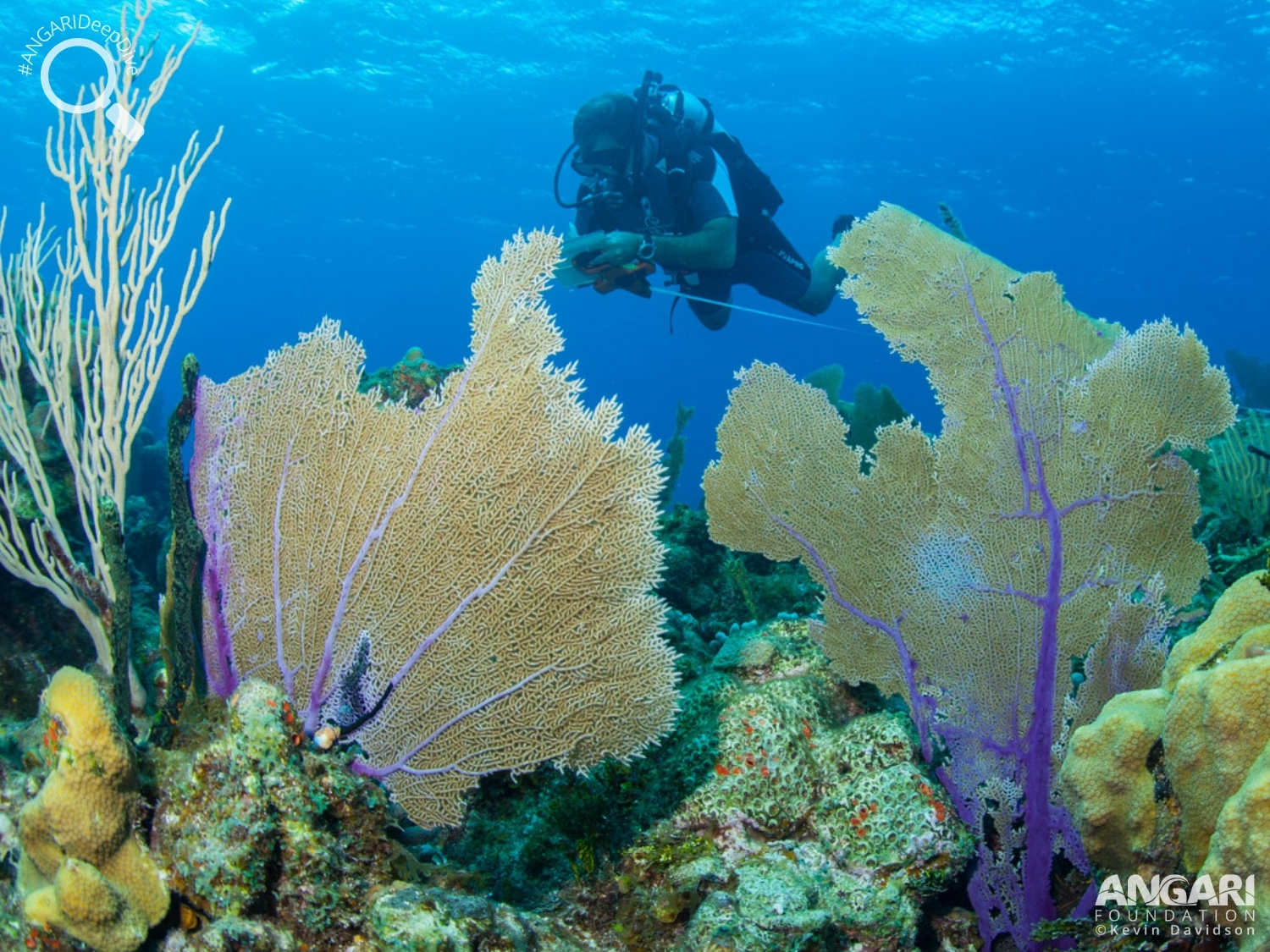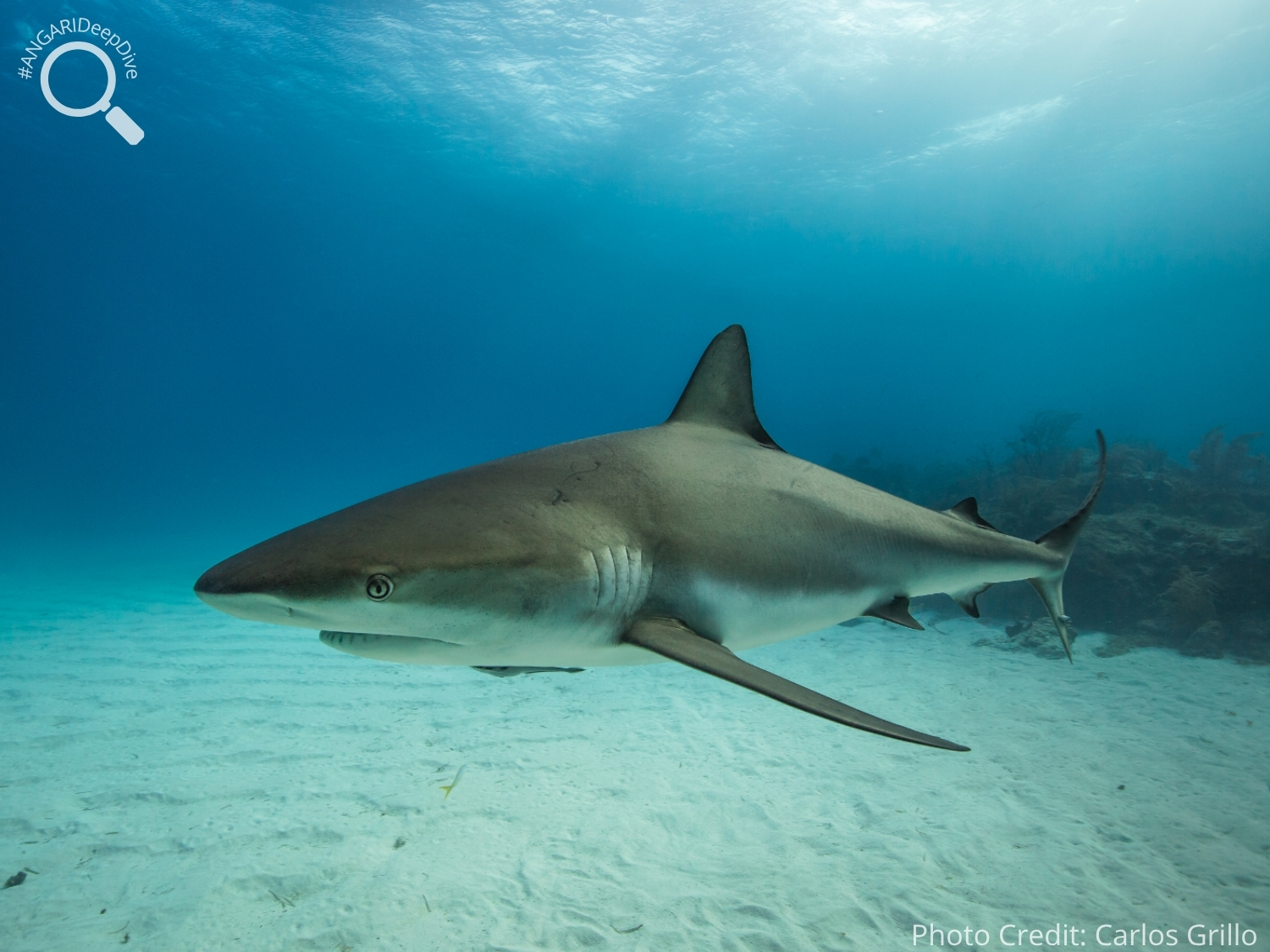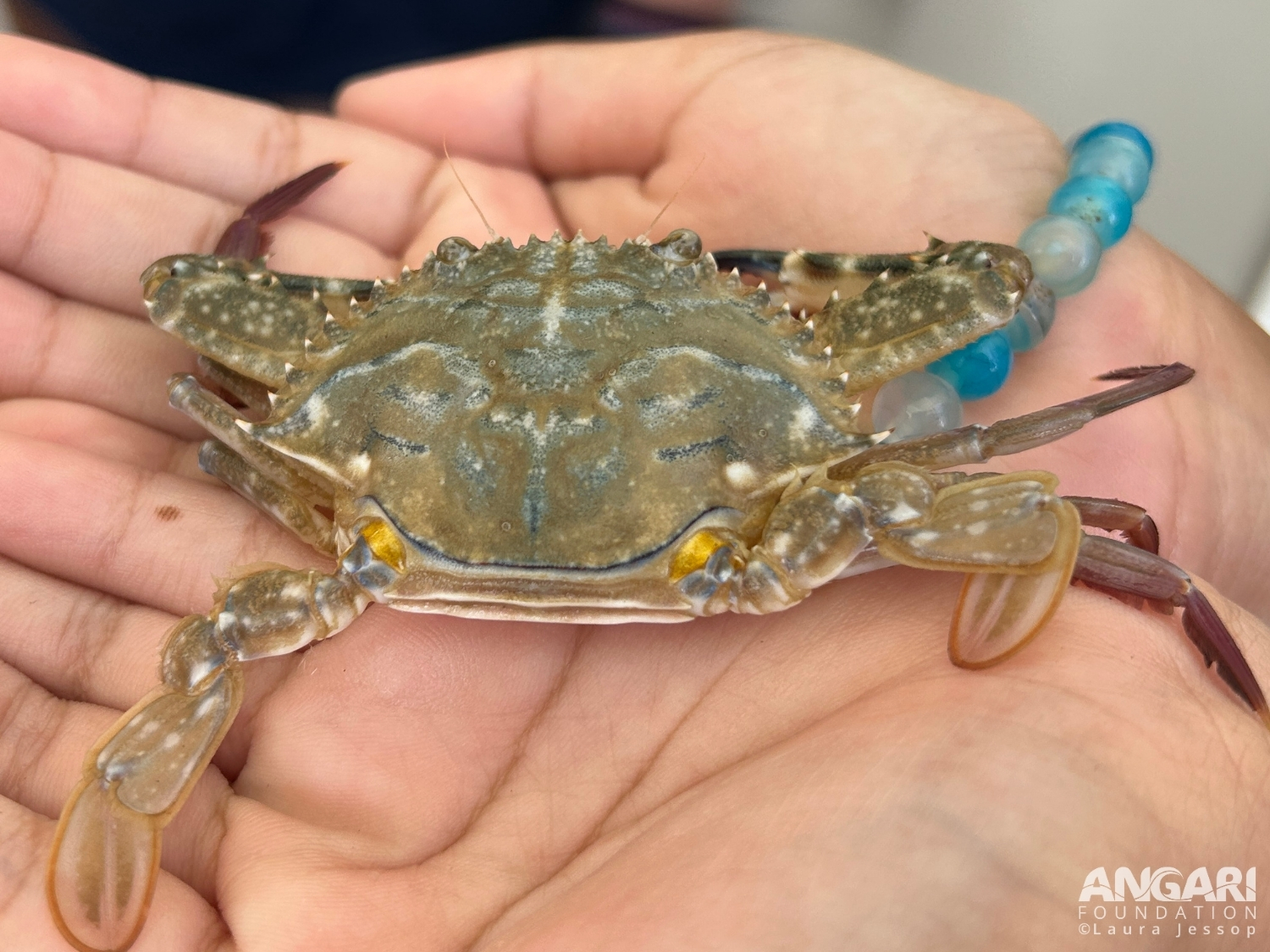Common sea fans are commonly found on coral reefs and can be identified by their purple tissue.
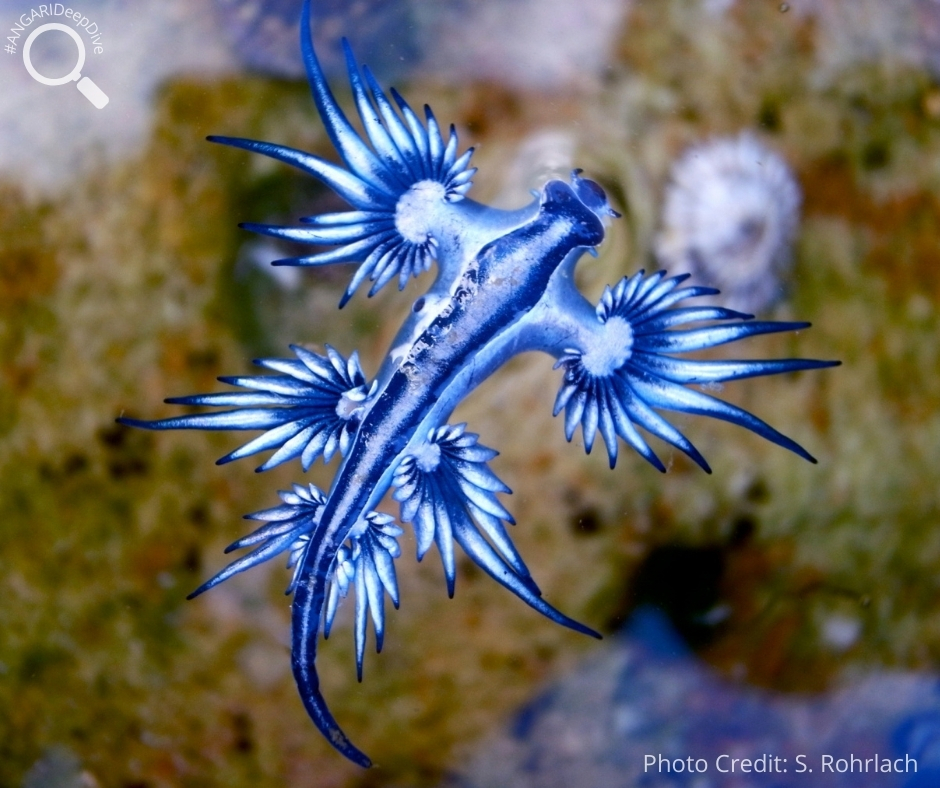
Blue Dragon (Glaucus atlanticus)
The blue dragon (Glaucus atlanticus), also known as a sea swallow or blue angel, is a brightly colored nudibranch, which is commonly referred to as a sea slug. This pelagic species has some unique characteristics, including the ability to store its prey’s venom! Keep reading to learn some fascinating facts about this species of mollusc!
#1: Where can the blue dragon be found?
The blue dragon can be found floating upside-down on the surface of temperate and tropical waters throughout the Atlantic, Pacific and Indian Oceans.

#2: How does the blue dragon stay afloat?
The blue dragon lives a pelagic lifestyle, living on the open ocean surface and drifting along with the currents. Most nudibranchs live lower in the water column or on the seafloor, but the blue dragon stores air bubbles in its stomach which keeps them afloat.
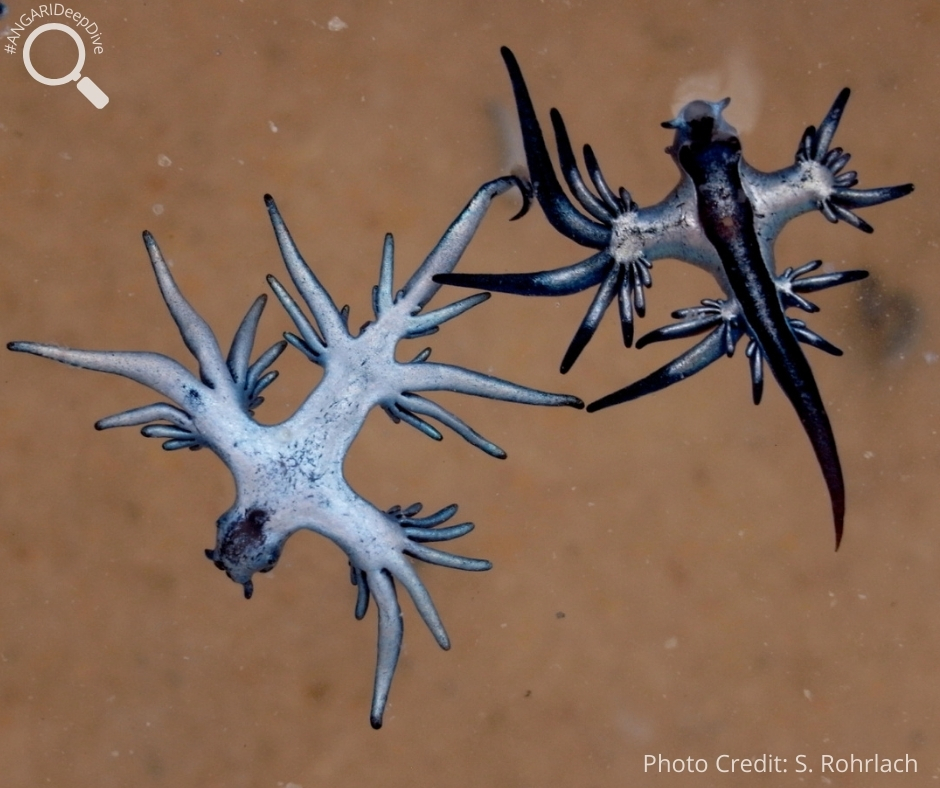
#3: Blue dragons are small!
The blue dragon has a formidable appearance; however, they are very tiny and only grow to be 1.2 inches (3 centimeters) in length. Not only are they small, but they also have a short lifespan of one month to no longer than a year.
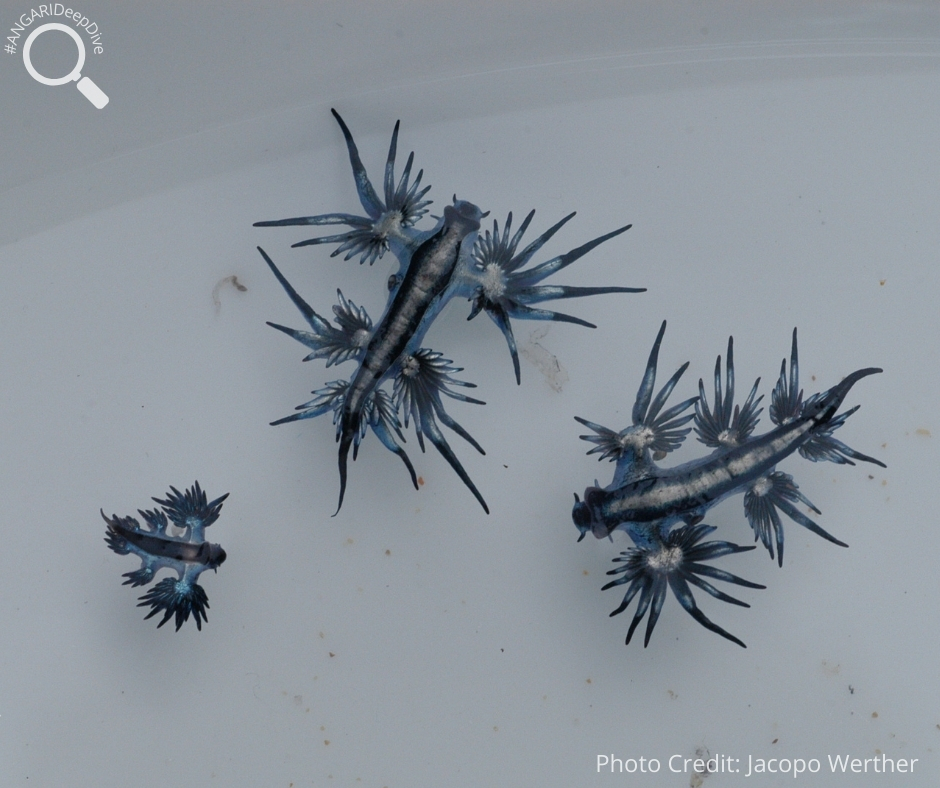
#4: What is on the menu for a blue dragon?
The blue dragon feeds on venomous siphonophores like the Portuguese man-o-war, which also float on the ocean’s surface. Blue dragons are immune to the man-o-war’s stinging cells called nematocysts, and blue dragons actually store the nematocysts in their wing-like appendages to use as their own defense mechanism. Additionally, the blue dragon has serrated teeth for grasping and shredding its prey’s flesh.

#5: The blue dragon’s cerata are multi-functional.
The blue dragon has impressive appendages that extend from its body known as cerata. These cerata help the blue dragon with many functions, including respiration, digestion, defending itself and storing the stinging cells, nematocysts, that it gets from its prey.

#6: The blue dragon’s defense will leave a sting.
As a result of the blue dragon storing their venom in their appendages, they are still a threat even after they have died. Their venom remains active even after death, so be careful and don’t pick one up if found!

#7: What is a group of blue dragons called?
Although normally the blue dragon spends its time on its own, they can attach together and form groups. A group of blue dragons floating together is called a ‘blue fleet’ and these ‘fleets’ can wash up ashore while still attached.

#8: Did you know that blue dragons use countershading?
The bright colors of the blue dragon is a very good example of countershading. Its strikingly vibrant blue color helps it blend into the ocean’s surface, making it hard to spot against the sea, while its gray underside allows it to blend into the ocean when seen from below. This allows them to camouflage themselves from both flying and swimming predators, while floating in open water! The biggest predator the blue dragon has to watch out for is the loggerhead sea turtle.

#9: Blue dragons are hermaphroditic.
Blue dragons are hermaphrodites, which means each individual has both male and female reproductive organs. They can exchange gametes with another individual during mating and both individuals will lay a string of about 16 eggs onto any floating objects on the water’s surface. The eggs take approximately three days to hatch into larvae.
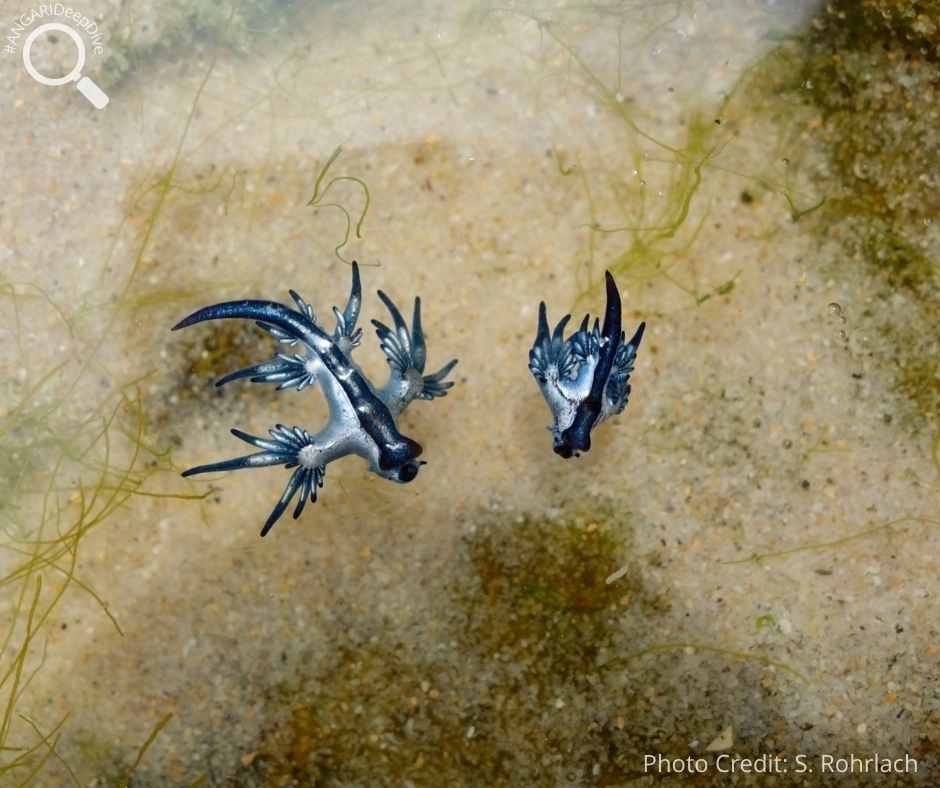
Due to its pelagic lifestyle, little is known about the population and conservation status of the blue dragon. This species is affected by factors such as habitat degradation, pollution and climate change, which could impact its population in the future. It is important that we keep monitoring and researching this species to further understand its ecological role and how we can protect it!
Additional Blue Dragon Resources:
1. Blue Glaucus – Oceana
2. Blue dragon – Australian Geographic
3. Blue Dragon Sea Slug – Bureau of Ocean Energy Management

